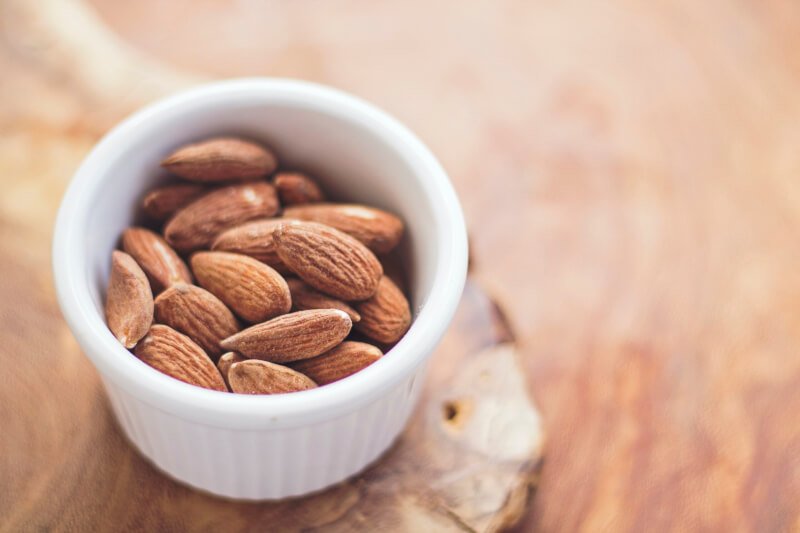In this article, you will discover an assortment of delicious and nutritious recipes that feature the star ingredient of garden fresh basil. From mouthwatering traditional pesto to unique variations like vegan and nut-free pesto, these healthy garden recipes will inspire you to make the most of your basil harvest. Whether you’re a seasoned chef or a novice in the kitchen, these easy-to-follow recipes will guide you step-by-step to create delectable pesto dishes that are sure to impress your family and friends. So grab your mortar and pestle, and let’s get cooking!
Choosing and Harvesting Fresh Basil
Selecting the Right Basil Varieties
When it comes to choosing the right basil varieties for your homemade pesto, there are a few options to consider. The most commonly used variety for pesto is Genovese basil, which has a sweet and strong flavor. Other popular varieties include Thai basil, with its spicy and licorice-like taste, and lemon basil, which adds a refreshing citrusy note to your pesto. Whichever variety you choose, make sure the plants are healthy and vibrant, with vibrant green leaves and no signs of wilting or disease.
When and How to Harvest Basil
Harvesting basil at the right time is crucial to ensure the best flavor and aroma in your homemade pesto. The best time to harvest is in the morning when the leaves are at their freshest. Using a sharp pair of scissors or garden shears, cut the basil leaves right above a healthy set of leaves, leaving a small portion of the stem intact. This will allow the plant to continue growing and produce more leaves throughout the season. Be sure to harvest just the amount you need, as basil does not store well once picked.
Preparing the Basil for Pesto
Washing and Drying the Basil Leaves
Before you can start making your homemade pesto, it’s important to wash and dry the basil leaves thoroughly. Fill a bowl with cool water and gently swish the leaves to remove any dirt or debris. After rinsing, place the leaves on a clean kitchen towel or paper towel and pat them dry. It’s important to remove as much moisture as possible to prevent your pesto from becoming watery.
Removing Stems and Discarding Imperfections
Once your basil leaves are dry, it’s time to remove the stems and discard any imperfections. Hold the stem of each leaf between your thumb and forefinger and gently slide your fingers down, separating the leaf from the stem. Discard any leaves that are discolored, wilted, or have any signs of disease. It’s important to use only the freshest and healthiest leaves to ensure the best flavor in your pesto.

Classic Homemade Basil Pesto Recipe
Gathering the Ingredients
To make a classic homemade basil pesto, you’ll need the following ingredients:
- 2 cups fresh basil leaves
- 1/2 cup grated Parmesan cheese
- 1/2 cup extra virgin olive oil
- 1/3 cup pine nuts
- 3 garlic cloves
- Salt and pepper to taste
Make sure to have all the ingredients prepped and ready before you start blending.
Blending the Basil Pesto
In a food processor or blender, combine the basil leaves, Parmesan cheese, pine nuts, and garlic cloves. Pulse the ingredients a few times until they are well combined. While the food processor is running, slowly drizzle in the olive oil until the mixture forms a smooth and creamy consistency. Add salt and pepper to taste, and blend for a few more seconds to incorporate the seasonings evenly. Your classic homemade basil pesto is now ready to enjoy!
Adding Nutritional Boosts to Your Pesto
Incorporating Nuts for Extra Protein
If you’re looking to add extra protein to your pesto, consider incorporating different types of nuts. While pine nuts are traditionally used in pesto recipes, you can experiment with other nuts like almonds, walnuts, or cashews. Toast the nuts lightly in a dry skillet or oven before adding them to the food processor. This will enhance their flavor and add a delicious crunch to your pesto. Just remember to adjust the measurements accordingly, as different nuts have varying sizes and flavors.
Using Superfoods to Enhance Flavor and Nutrition
Superfoods are packed with nutrients and can be a great addition to your homemade pesto. Consider adding a handful of spinach or kale to your basil pesto blend. Not only will these leafy greens give your pesto a vibrant green color, but they will also provide added vitamins and minerals. You can also experiment with other superfoods like avocados or chia seeds. These additions will not only enhance the flavor and nutrition of your pesto but also add a unique twist to your recipe.

Vegan and Dairy-Free Pesto Variations
Substituting Nutritional Yeast for Cheese
If you’re following a vegan or dairy-free diet, there are simple substitutes you can use to replace the traditional Parmesan cheese in your pesto. One popular option is nutritional yeast, which adds a cheesy and nutty flavor to your pesto without any dairy. Simply substitute the grated Parmesan cheese with an equal amount of nutritional yeast in your recipe. You can find nutritional yeast at most health food stores or online.
Exploring Alternative Ingredients
In addition to substituting cheese, there are other alternative ingredients you can explore to make your pesto vegan or dairy-free. Instead of using pine nuts, try using a different type of nut or seed, such as sunflower seeds or pumpkin seeds. You can also experiment with different oils, like avocado oil or almond oil, to add richness and flavor to your pesto. Don’t be afraid to get creative and try new combinations of ingredients to suit your dietary preferences and taste.
Creative Ways to Use Basil Pesto
Spreading Pesto on Toast or Crackers
One of the simplest and most delicious ways to use basil pesto is by spreading it on toast or crackers. Toast a slice of crusty bread or use your favorite type of cracker, and generously slather it with your homemade pesto. The creamy and fragrant flavors of the pesto will perfectly complement the crunchy texture of the bread or crackers. This quick and easy snack is perfect for any time of the day and is sure to satisfy your taste buds.
Tossing Pesto with Pasta or Grains
Another classic way to use basil pesto is by tossing it with pasta or grains. Cook your pasta or grains according to the package instructions until they are al dente. Drain the cooked pasta or grains, but reserve some of the cooking water. In a separate pan, heat a drizzle of olive oil and add the pesto. Stir in the cooked pasta or grains, adding a splash of the reserved cooking water to loosen the sauce. Toss everything together until well coated, and serve with a sprinkle of Parmesan cheese, if desired. This simple and flavorful dish makes for a satisfying meal or side dish.

Freezing and Storing Homemade Pesto
Proper Storage Techniques
If you find yourself with an abundance of basil or want to make a large batch of pesto to enjoy throughout the year, freezing is the way to go. To properly store your homemade pesto, transfer it into an airtight container or freezer-safe bag. Make sure to remove as much air as possible to prevent freezer burn. Label the container or bag with the date and store it in the freezer for up to six months. This way, you’ll always have a taste of summer, even in the coldest months.
Creative Ice Cube Tray Freezing Method
Another creative way to freeze homemade pesto is by using an ice cube tray. Simply transfer the pesto into the ice cube tray, filling each compartment about three-quarters of the way full. Place the tray in the freezer until the pesto cubes are firm. Once frozen, pop the cubes out of the tray and transfer them into a freezer-safe container or bag. This method allows you to easily portion out the pesto and thaw only what you need for future recipes.
Using Pesto as a Base for Other Recipes
Creating Pesto Salad Dressing
Pesto can be a versatile base for creating delicious salad dressings. Simply whisk together equal parts of your homemade pesto and a tangy vinegar, such as red wine vinegar or balsamic vinegar. You can also add a squeeze of fresh lemon juice for an extra zing. Season with salt and pepper to taste, and drizzle the dressing over your favorite salad greens or roasted vegetables. This homemade pesto salad dressing will elevate your salads to a whole new level and add a burst of flavor.
Incorporating Pesto into Soups and Dips
Pesto can also be a wonderful addition to soups and dips, adding a burst of flavor and a vibrant green color. Stir a spoonful of pesto into your favorite vegetable soup or tomato soup to give it an herby twist. You can also swirl pesto into creamy dips, such as hummus or yogurt-based dips. The possibilities are endless, and the addition of pesto will take your soups and dips from ordinary to extraordinary.

Garden Fresh Basil Pesto Variations
Substituting Different Herbs for Basil
While basil is the traditional herb used in pesto, you can get creative and substitute other herbs to create unique flavor combinations. Experiment with herbs like cilantro, parsley, or mint for a refreshing twist. Each herb will bring its own unique flavor profile to the pesto, allowing you to tailor the taste to your preferences. Don’t be afraid to mix and match herbs to create a pesto that suits your taste buds.
Adding Additional Vegetables for Variety
To add more depth and variety to your pesto, consider incorporating additional vegetables into the mix. Spinach, arugula, or roasted red pepper can be blended with the basil to create a pesto with a more complex flavor. These vegetables will not only add a beautiful pop of color but also enhance the nutritional value of your pesto. Get creative with your vegetable choices and discover new and exciting flavor combinations.
Pesto Pairings and Serving Suggestions
Complementing Pesto with Different Foods
Pesto can be paired with a variety of different foods to create delicious and satisfying meals. Spread pesto on a grilled chicken breast or roasted vegetables for an added burst of flavor. Dollop a spoonful on top of a freshly cooked omelet or scrambled eggs for a tasty breakfast treat. Pesto also pairs well with seafood, such as shrimp or salmon, adding a bright and zesty note to the dish. The versatility of pesto allows you to explore different flavor combinations and create a wide range of meals.
Presenting Pesto in Unique Ways
When it comes to serving pesto, presentation is key. Get creative and think outside the box to impress your family and friends. Use a cookie cutter to shape your pesto into fun and decorative shapes, then place them on top of a cheese board or charcuterie platter. Alternatively, you can fill small mason jars with pesto and tie a ribbon around the lid for a charming and homemade gift. Let your creativity shine and have fun showcasing your delicious homemade pesto in unique and visually appealing ways.
In conclusion, with an understanding of how to choose, harvest, and prepare fresh basil, you can confidently create your own homemade pesto. By experimenting with different ingredients, variations, and pairings, you can elevate your pesto to new heights of flavor and nutrition. So, roll up your sleeves, gather your ingredients, and let your culinary adventure with basil pesto begin. Enjoy the freshness and vibrancy of your garden’s bounty as you savor the mouthwatering and versatile flavors of homemade pesto.



